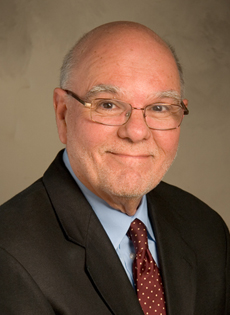
Euthanasia and assisted suicide: Where we stand today
Monday, July 10, 2017
*Dr. Felipe Vizcarrondo
This is the second of two blogs by Dr. Vizcarrondo on this subject. Read the first one here.
In the 1930s, attempts were made in Great Britain to legalize euthanasia. Several decades later, in the 1970s, several cases of euthanasia were made public in Great Britain, and the Netherlands. At this time, euthanasia was not legal in either country. The perpetrators were either given a light sentence or were unpunished.
In 1978, Derek Humphry, a British-born American journalist, published a book in England describing his wife’s death from a deliberate overdose. She had advanced breast cancer. Humphry justified assisted suicide on the grounds of love and compassion and supported the notion of decriminalization of voluntary euthanasia.
In 1980, in California, Humphry founded the Hemlock Society. In 2003, the organization changed its name to Compassion and Choices. The right to die movement was launched.
In this country, assisted suicide is legal in six states and the District of Columbia; euthanasia, or the active killing of patients, continues to be against the law.
In 1997, the state of Oregon legalized physician assisted suicide. Twenty years later, attempts are being made to expand the law. A bill was introduced to make it possible for someone to administer the deadly drug if the patient is no longer physically or mentally able to do so. This would be a significant step toward legalizing the active killing of a patient by a healthcare worker.
Assisted suicide was legalized in Washington state (2008), Montana (2009), Vermont (2013), California (2015), Colorado, (2016), and the District of Columbia in 2017. Canada legalized assisted suicide and voluntary euthanasia in 2016.
Euthanasia and physician assisted suicide have been practiced in Western Europe for decades. Holland has the longest experience. In the Netherlands, voluntary euthanasia and physician assisted suicide are lawful since 2002 but have been permitted by the courts since 1984. At present, involuntary euthanasia is practiced widely in the Netherlands; the decision to kill the patient is made by the family. Frequently, it is the Dutch physician who decides who lives and who dies. At present, children with congenital defects are euthanized upon request of the parents.
In Switzerland, physician and non-physician assisted suicide has been tolerated by the courts for several decades. In 2001, the Swiss National Council confirmed the assisted suicide law but kept the prohibition on euthanasia. In the Euthanasia Clinics in Switzerland, commonly called “death clinics,” people come from all over the world to be killed. Swiss law allows non-Swiss residents to be killed, so called death tourism.
Euthanasia and physician assisted suicide are legal in Belgiumsince 2002. This small country has the most liberal euthanasia laws in Europe.
In 2009, Luxembourg became the fourth country in Europe to legalize and decriminalize physician assisted suicide and euthanasia. Parliament passed a law legalizing euthanasia in 2003 which the Roman Catholic monarch vetoed. The parliament took away this power from the Grand Duke and passed the law a second time without opposition.
It appears that western liberal mores have embraced the so called right to death. The process has taken years but it has taken root as we see the experience in Western Europe. The justification for euthanasia and assisted suicide is based on the principle of personal autonomy and compassion for the individual person’s pain and suffering. The person’s autonomy, or right of self-determination, is considered the imperative obligation. He who asks to be killed cannot be refused.
Modern culture views pain and suffering as disgraceful and undignified, and insists that the pain and suffering experience be removed by any means. Pain and suffering are permanent features of life, especially at the end of life. Taking the suffering person’s life is not the solution; the taking of innocent life is never a moral act.
The majority of patients who commit suicide are suffering from depression. Removing the patient rather than treating the patient’s condition is not a moral act. Treating the patient’s depression will save the patient from suicide ideation. The medical professional ought to use his skills to care for the ailing patient with love and compassion, treating physical and emotional pain with respect, preserving the person’s dignity. With effective comfort and dignity care, the ailing person is allowed to make peace with family and friends.
Of great concern is that the physician is being coerced by society as well as by many professional organizations to become complicit in the taking of innocent life. The physician healer is to become the physician killer, as it was during the time of Hippocrates, when the patient did not know if he was to be healed or be killed. The maxim that the physician ought not do harm to his patient is ignored. The individual physician as well as the medical community must refuse to be intimidated into complying with this ideology of death.


Comments from readers